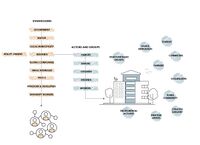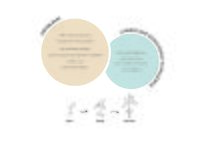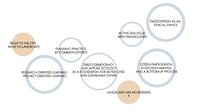LED2LEAP 2021 - Nitra Team 1: Difference between revisions
| Line 49: | Line 49: | ||
== Groups of Actors and Stakeholders in Your Community == | == Groups of Actors and Stakeholders in Your Community == | ||
* | * The main social groups living in the settlement are families, seniors, children, students and workers. They include several groups with common interests or background. Smaller but not less important are etnic groups. | ||
* Stakeholders are an integral part of the urban scene and community and have the power to influence urban landscape and therefore also peoples lives. | |||
<gallery caption=" " widths="200px" heights="150px" perrow="5"> | <gallery caption=" " widths="200px" heights="150px" perrow="5"> | ||
Revision as of 14:44, 3 May 2021
>>>back to working groups overview
For help with editing this Wiki page use this link.
For assignments and key readings use this link.
| Area | blank | |
| Place | blank | |
| Country | blank | |
| Topics | blank | |
| Author(s) | blank, blank, blank, blank, blank | |

| ||
Landscape Democracy Rationale
Phase A: Mapping Your Community
Welcome to Your Community and Their Landscape
- Our mapping area & living lab is situated in Nitra which is in western Slovakia at the foot of Zobor mountain in the Nitra River valley and also in the Danubian Lowland. The city is divided into 13 urban districts and Nitra is also one of the oldest cities in Slovakia the polulation is about 78. 000 in the picture we can see the whole city also the 2 choosen residential quarter areas Klokočina- the biggest one, and Chrenová. As I mentioned Nitra lies between lowlands and highlands, mainly arable lands are around the city. The city is divided with the river Nitra-which is also an ecological corridor. In fact Nitra is the greenest Slovak city- there is 140 m2 of urban green space per inhabitant. from the whole are of the city urban green areas takes 2,75 % - which are mainly city parks and forests are about 16,41 % belongs here the landscape protected areas as Ponitrie and Dvorčiansky les.
These residential quarters KLOKOČINA and CHRENOVÁ were built as prefabricated blocks of flats in the 70s and 90s of the 20th century. Inner spaces of the blocks of flats are filled with greenery and some artwork of sculptors and it was supposed to serve as sport and relax areas but this function is degradating.
Socio-economic prosperity is mostly concentrated in the city center of Nitra but there are some spots in residential quarters such as shopping center, restaurants and bars concentrated in few spots and there are also some socio-economic events such as exhibitions in Agrokomplex and Botanical garden, market festival or sport events.
- PlaceholderImage x.jpg
insert text here
Groups of Actors and Stakeholders in Your Community
- The main social groups living in the settlement are families, seniors, children, students and workers. They include several groups with common interests or background. Smaller but not less important are etnic groups.
- Stakeholders are an integral part of the urban scene and community and have the power to influence urban landscape and therefore also peoples lives.
Relationships Between Your Actors and Groups
- insert text here
Summary of Your Learnings from the Transnational Discussion Panel
- insert text here
Theory Reflection
• Editors Shelley Egoz, Karsten Jørgensen, Deni Ruggeri (2018): Defining Landscape Democracy (introductory chapter) Bold text Common characteristics of landscape democracy: citizen participation in decision-making and a bottom-up process. While each situation has to be handled according to specific social and cultural manners, the underlying doctrine must remain social equality. Langhorst argues that various systems of neo-liberal restructuring are threatening democracy. He proposes adopting the concept of ‘assemblage’ and operating in fluid environments with various human and non-human actors that intersect and interact’.
• 'Wilson, Barbara (2020): Disorientation as a Learning Objective'Bold text The main purpose of this article was to point out the existence of white racism against black people, and show how it can impact on planning practice on the example of Friendship Court in Charlottesville, VA.
References
- insert text here
Phase B: Democratic Landscape Analysis and Assessment
The Scene in Your Story of Analysis
- insert text here
The Actors in Your Story of Analysis
- insert text here
The Story of Analysis
- insert text here
Reflect on Your Story of Analysis
- insert text here
Phase C: Collaborative Visioning and Goal Setting
The Scene in Your Story of Visioning
- insert text here
The Actors in Your Story of Visioning
- insert text here
The Story of Visioning
- insert text here
Reflect on Your Story of Visioning
- insert text here
Phase D: Collaborative Design, Transformation and Planning
Your Prototyping Action
- insert text here
The Evolution of Your Prototyping Action
- insert text here
The Plan Behind Your Prototyping Action
- insert text here
The Realization of Your Prototyping Action
- insert text here
Reflect on Your Prototyping Action
- insert text here
Phase E: Collaborative Evaluation and Future Agendas
Collaborative Evaluation and Landscape Democracy Reflection
- insert text here
The Actors in your Collaborative Evaluation
- insert text here
Reflection on the Online Seminar
- insert text here
Reflection on the Living Lab Process
- insert text here
- Location jpg
insert text here
Your Living Lab Code of Conduct
- insert text here
Process Reflection
- insert text here
























